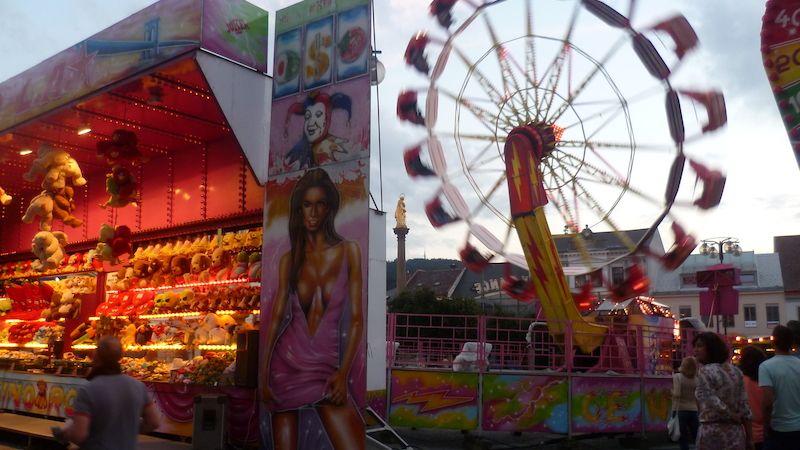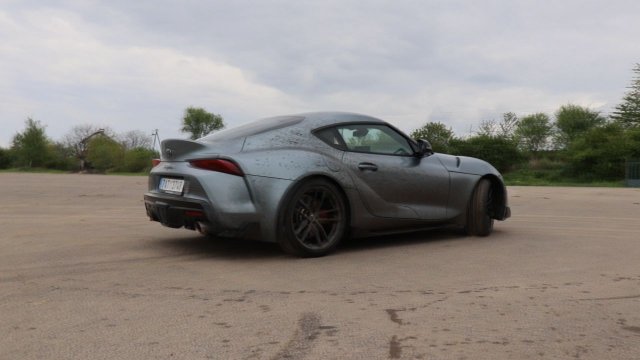For most Croats, faith is a common part of life, which is also reflected in the concept of celebrating the individual events of the year. Christmas is one of the most beautiful. Midnight Mass in Split has started at four in the afternoon for centuries. The main one takes place in the small church of Our Lady of Bethlehem with a beautifully preserved stone altar on Marjan hill, where people make pilgrimages.
The reason for moving to a time before sunset was simple – so people could be home in time for Christmas Eve and still have time to go to another church in town in the evening.
Marjan Hill is a protected area on the west side of the Split peninsula, offering fantastic views of the cityscape. In addition, it is also decorated with a small votive church necklace.
Lonely streets are something you won’t experience in summer.
New year on the beach
Another, this time, Split’s modern Christmas specialty, which already has a completely secular character, is the picigin game. This is a water fun similar to water polo, which takes place on New Year’s Day on the city’s main beach – Bačvice. The aim of the game is to keep the ball above the water as long as possible. This hobby is definitely not for everyone. Although the temperature in Split in December is much higher than, for example, in Prague, it is still unsuitable for carefree swimming.
Although the Croatian Christmas season officially starts with Advent, in some parts of the country Christmas time already falls on Saint Catherine’s day, namely the twenty-fifth of November. There is also an old saying related to this day, namely St. Catherine closed the door. That means, starting today, no big weddings or celebrations for a whole month.
In Split, unlike, for example, in Zagreb, this custom is not yet fully established, but most Split women sow wheat on the thirteenth of December for the feast of St. Nicholas. The bowl filled with seeds is then placed under a decorated Christmas tree and symbolizes fertility, new life and its renewal. As the wheat grew tall and thick, people believed that the year ahead would be successful and abundant.
In December, Split is naturally cooler than summer, but you can still experience balmy temperatures here.
What do residents of seaside resorts eat on Badnjak, or Christmas Day? If you guessed as the classic Christmas forage fish, you’re right. But you may not hit the right one. It’s not a freshwater fish, or a lupine or a frog. This is a fish that doesn’t belong in the Adriatic waters at all, but has been at home on the Christmas dinner table for centuries. We are talking about dry cod “bakalar”, which Croats prepare in several ways.
Either it appears on the table in brudet form, e.g. a dish similar to fish goulash, or cooked white so-called with potatoes. Despite the fact that people prefer fresh fish to unappealing canned fish that looks like a piece of rotting wood, there is something much more striking. How the Nordic fish managed to travel to the Dalmatian table and become such a cult here that it hasn’t swam even after nearly five centuries.
To Adventist Bratislava for shopping, learning and entertainment
traveling
The story of cod begins in 1431 in Heraklion on the Greek island of Crete, where the Venetian nobleman and merchant Pietro Querini sailed. He headed for Bruges in Flanders. However, the voyage did not go as expected and the entire fleet of three fully loaded ships was wrecked in a strong storm. Most of the crew died and those who managed to survive in the lifeboats sailed across the North Sea to the island of Rost in Lofoten, where they ran aground.
Midnight Mass begins at four in the afternoon.
Only local fishermen save them. Eventually, the exiles lived there for three months and learned to eat cod cut into small pieces and fried in butter. When they returned to Italy in small cargo ships, they also loaded barrels of cod dried in the sun and wind. Trade gradually developed well, and fish and furs regularly traveled from northern Europe to the south, and beer, wine, clothing and jewelery in the opposite direction.
The connection between cod and Christmas came in 1561. The Pope held a council in Trident, Italy, one of the results of which was to condemn pride, blasphemy and all kinds of worldly pleasures. Naturally, the question of fasting arises next, which should lead to the attainment of holiness and the manifestation of fidelity and gratitude to God.
But who would want to give up the delicacies that rich Europeans used to enjoy at the time? Therefore, famous chefs were given homework. They should think of a delicious way of cooking according to religious standards. And the dried cod recipe was suddenly born.
Male singing
Definitely go to Riva – the coastal promenade, the most popular place in town, where you can enjoy a pint of fruit drink in winter. Višnjevac is probably the tastiest, though raspberry or blueberry versions also appeal.
View of the Riva coastal promenade illuminated by the December sun.
Few people rush out of here, not only for the goodness of the liquid and heat pouring from under the gas stove, but also for the beautiful sight of palm trees flaming with colors and kitschy Christmas decorations. You can recognize him by the lines of photos winding in front of his Santa Claus decorations and his reindeer sleigh.
The traditional Christmas program also includes musical performances. But this isn’t just any production where you have to worry about bursting your eardrums from loud music. On the other hand. The polyphonic singing of the purely male group, which sings without instrument accompaniment, namely a cappella, is an acoustically pleasing experience.
The leader of any singing group or “klapa” is the tenor first, followed by the second, followed by the baritone and finally the bass. During the performance, the singers stand in a tight circle. This musical method has even been included in the Intangible Cultural Heritage of Humanity (UNESCO) list.
Deer with sleigh at the beginning of the promenade
Small center
Split’s historic center is not big at all. You might feel a bit at home here. Strossmayer Park, which the locals call Djardin, is named after the Croatian theologian and ethnographer Josip Juraj Strossmayer, just like the square in Holešovice in Prague.
Riva promenade and Christmas decorated palm trees
You shouldn’t miss the main shopping street – Marmontova Street. If you didn’t buy handmade souvenirs at one of the stalls, you’re sure to find something here.
Forget the classics. Zagreb has one of the most beautiful Christmas markets
traveling
This year, for the first time, a number of new locations will also wear Christmas clothes, such as náměstí Šperun, which can be found in one of the oldest parts of the city, in Varoš. Every Wednesday and Saturday you can enjoy acoustic performances here.
How to get here
- by car: You will cover a distance of approximately 1000 km in approximately 10 hours; suggested route Prague – České Budějovice – Linz – Graz – Maribor – Zagreb – Split.
- by bus: with FLIXBUS with one transfer; an average return ticket costs 3500 CZK; the journey takes approximately 16 hours.

“Unapologetic social media guru. General reader. Incurable pop culture specialist.”







